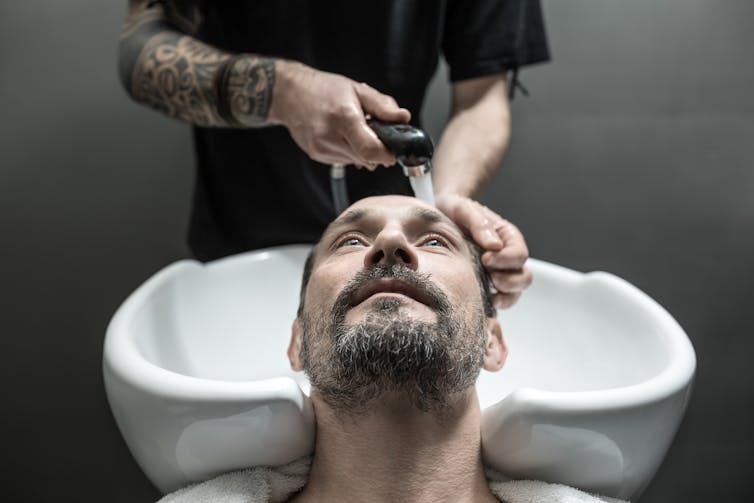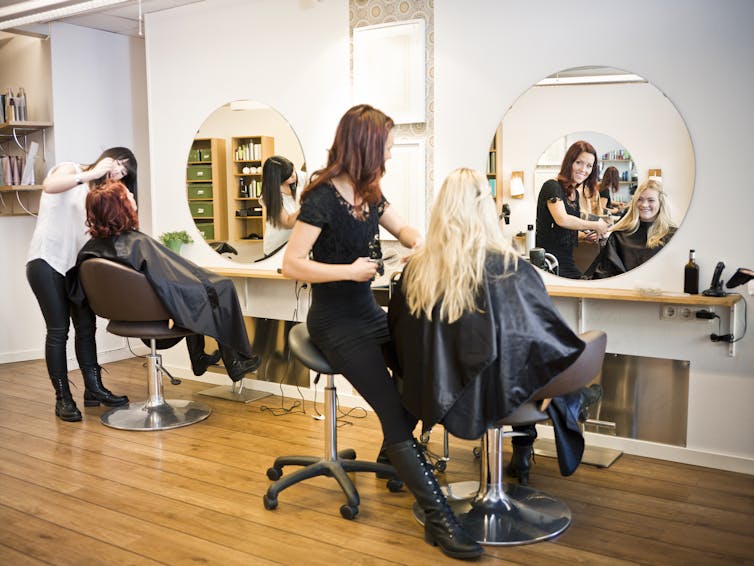When you hear about businesses with a high environmental impact or activities with a high carbon footprint, you are probably more likely to imagine heavy machinery, engines and oil rather than hairdressing. Yet hairdressing, both as a sector and as an individual activity, can have a massive carbon footprint.
Hairdressing uses high levels of hot water, energy and chemicals. Similarly, in our homes, heating hot water is typically the most energy intensive activity. For the cost of a ten-minute shower that uses an electric immersion heater, you could leave a typical television on for 20 hours.
So while it helps to turn lights and appliances off, the real gains in terms of reducing energy usage are in slashing our use of hot water. A quarter of UK emissions are residential and, of those, the vast majority come from running hot water. The longer it runs and the hotter it is, the more energy intensive (and costly) it is.
Little changes, big results
Most people use too much shampoo and wash their hair too often. A daily routine of shampooing your hair twice followed by a wash out conditioner uses annually about 14,222 litres of water and 1252kWh of energy, costs about £245, and has a carbon footprint of 500kg of carbon dioxide equivalents (CO₂e).
On the other hand, if you shampoo your hair twice a week (supplementing that with a dry shampoo if needed) and use a leave-in conditioner, you will use annually just 613 litres of water and 55 kWh of energy, produce a carbon footprint of 25kg of CO₂e, and cost yourself about £27 a year.

Research has also revealed how shampoo can contribute to pollution. Maybe this in part explains why sales of shampoo have fallen over the past few years in the UK – with many people choosing to wash their hair less often.
Washing your hair less doesn’t just save you money, it’s also much better for your hair condition. It can also help to limit the ageing effects of over exposure to hot water and chemicals on your skin.
Increased awareness
My latest research project looks at the issue of sustainability across the hairdressing sector. Not only is the hair sector a high user of resources, but hairdressers probably talk to more people than any other occupation – and are in a great position to pass on advice about lower resource hair care.
From speaking with hairdressers, it seems that ever since the episode of Blue Planet II in which David Attenborough explained how a whale mother was still carrying her dead baby which, it was claimed, had been poisoned by plastics (though scientists working on the show have confirmed there was no actual evidence to prove this) salons have been seeing a massive increase in clients wanting to know that their hairdresser is doing their bit.
Our research has found that many hairdressers are keen to make changes that are better for the environment. The opportunity to present their industry as part of the solution rather than part of the problem is very attractive to hairdressers, as it boosts their sense of professional identity and pride in offering a well informed service.
Sustainable stylists
A large focus of the project has been on equipping hairdressers with the skills and knowledge required for them to talk to their clients about sustainable hair care. There are many products out there that are better for the environment, not because they have “organic” or “eco” on the label, but because they reduce the need for hot water.
Dry shampoo is a great example. It is fast, convenient, and great at festivals and on the move. It also makes hair easier to style, is cheap and avoids the need for any hot water. Similarly, leave-in conditioner avoids the need for an extra rinse and again makes hair easier to style. It is also fantastic at giving body to fine hair, and saves water, energy, money and time.

Our ecohair project, run in association with the Vocational Training Charitable Trust and the Hair and Beauty Industry Authority, provides a sustainable stylist certificate at no cost, once hairdressers have completed the training programme. The salon owner can also obtain a sustainable salon certificate to let customers know these things are important to their business.
Getting certified as a sustainable salon has numerous benefits, and not just in terms of reputation. Adopting the changes as part of the scheme saves the typical salon 286,000 litres of water, 24150 kWh of energy and £5,300 a year.
And with new research showing the increased threat of climate change and the need for urgent behavioural change, it is great that simple alterations to our hair care routines – and where we choose to get our hair cut (you can find sustainable salons here) – can make such a difference to the planet we call home.


